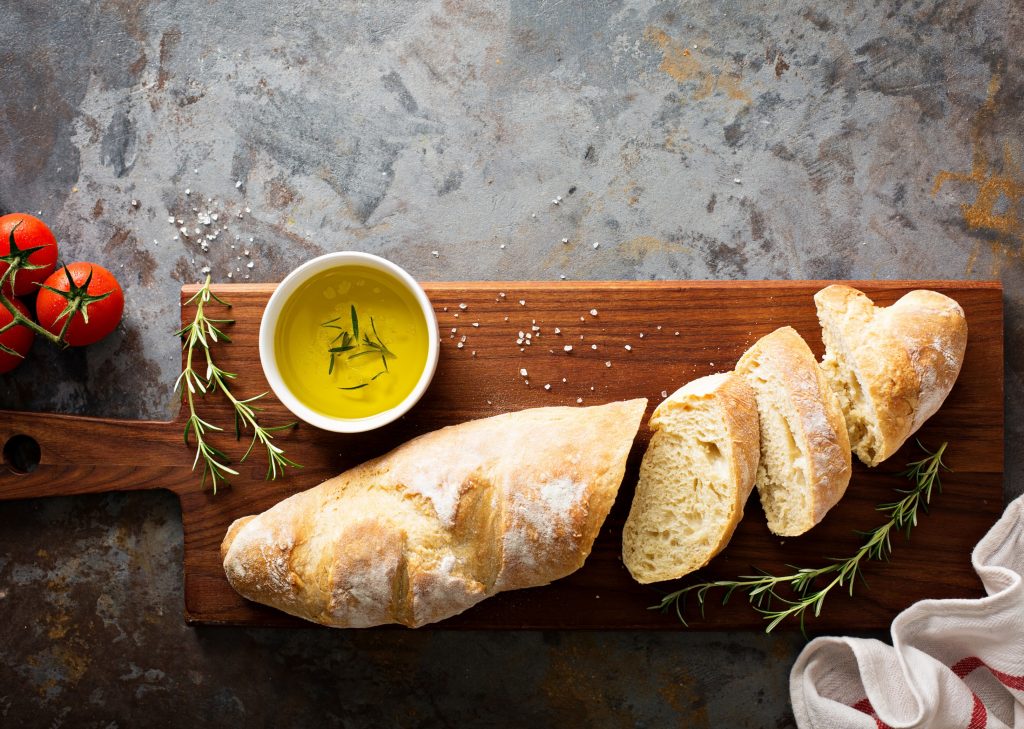Baguette has a crisp crust and longish shape. It is one of the most consumed bread in France. This attractive bread is used to make a number of snacks and starters.
Here are a few common starters and snacks that are made using baguette:
- Veg Club Sandwich
- Cherry Tomato and Avocado Crostini
- Classic Garlic Cheesy Pull-Apart Bread
- Paneer Tikka Sandwich
- Cherry Tomato and Ricotta Sandwich
- Paneer and Tomato Open Toast.
- Mini Pizzas with Mini Pepperoni
- Dill, Cream Cheese and Smoked Salmon Baguettes
- Cheesy Brussels Sprouts
- Cranberry Brie
It doesn’t matter if you’re baking or buying baguettes, you need to know the basic baguette essentials.
Good Baguette Vs. Bad Baguette
Here are five things to look for that differentiate a good baguette from a bad one.
#1. Crispy Crust
Begin by holding the baguette close to your ear. Slightly squeeze the crust and listen to the sound. Does it create a symphony of crackle or a shattering sound?
Add to your shopping cart only if it “sings like a bird.”
#2. Colour Code
Your baguette’s colour says a lot about its quality. If it’s brown and yellow, it means it has the required caramelization.
#3. What’s Inside?
Cut the baguette and notice the colours. A perfect baguette will have a rich cream colour whereas a poorly made baguette will have a white colour.
#4. Holy Holes
Pay attention to the number and size of holes on your loaf. Big and small holes all over the bread are evidence that the dough rose or has been proofed properly.
#5. Smell
What does your baguette smell like? The best way to do this is to put it in front of your nose and push it to see if you can smell 100 different flavours.
Making Baguette at Home
Don’t let the recipe scare you, it looks complicated but is not. We assure you that if you follow our instructions properly, you’ll have a beautiful and irresistible baguette in no time!
In step 10, remember to make light incisions. Devour the baguette right away or store it in an air-tight container for up to 2 days.

Baguette (Homemade French Bread Recipe)
Ingredients
- A pinch of salt
- ½ tsp sugar
- 1½ tsp instant dry yeast
- 2¼ cups of plain flour some more for rolling
Instructions
- In a bowl, combine together 2 tablespoons of warm water with yeast. Cover and keep aside for 15 minutes.
- Mix the yeast mixture with salt and plain flour. Use warm water to knead into a sticky loose dough.
- Transfer this dough to a deep greased bowl. Cover using a damp muslin cloth. Keep the bowl in a warm place for 40-45 minutes.
- Use plain flour to lightly dust your fingers. Loosen the dough by scraping the sides of the bowl. Pull and fold the dough 6-8 times before covering it with the damp muslin cloth. Keep the bowl in a warm place for at least 2 hours.
- Lightly dust your surface using plain flour. Pull and fold the dough 4-6 times but don’t knead it.
- Use a sharp knife to equally divide the dough into 2 portions. Keep one dough portion aside.
- Pat the dough to form a rectangle before rolling it to make a 12” (300 mm) cylindrical roll. Pinch the sides and edges all over to seal tightly.
- Repeat steps number 7 and 8 with the remaining dough.
- Place both the rolls on a dusted baking tray. Cover them with the damp muslin cloth. Let them rest for an hour.

